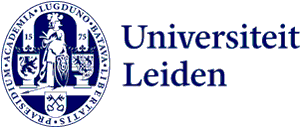
Women collecting the Middle East: collaborators and collections
Who assembled the collections of museums? The answer to this question seems to point to men as collectors. Apart from for rare exceptions, female collectors hardly seem to exist. Yet there were indeed women collectors. For the project Museums, Collections and Society, researcher Holly O'Farrell will map out their work.
‘Women were often working together with their husbands or under a male supervisor,’ O’Farrell explains. ‘Even if collections were made by a man and woman team, they usually went under the man’s name. I’m interested in the agency of these women. Were they able to decide what they were collecting?’
Photography as a feminine medium
As in her previous research, she concentrates on the Middle East. Currently the focus is on former Palestine in the early twentieth century. ‘I found a group of women working there in different capacities, anthropological and archaeological. I thought it was interesting that there were quite a few women working in this area. What drew them there? This was under the British mandate of Palestine, so their husbands may have been working in projects or the army. It’s also possible they were trying to find evidence for the history described in the Bible. There were quite a few people who were interested in that at the time.’
In any case, it is certain that many of the collections created by women contain photographs. Women appear to have applied themselves relatively often to that medium. ‘Even if the object collections are made by the man, often the photography around the archaeological digs was done by women,’ O’Farrell says. ‘I haven’t got to the bottom of why that happened, but I assume it was seen as more proper. Men were digging in the ground, women took the photographs. It’s also possible photography gave women a bit of independence. If you have the equipment, you can take the pictures. You maybe don’t have access to the money to go out and buy archaeological finds, but you can take the photographs.’
Open archives and museums at last
In the coming period, O’Farrell would like to test such hypotheses in the archive, where she will analyse not only photographs and objects but also letters and diaries. Something that has hardly been possible since her arrival in Leiden in September 2020 due to the coronation measures. ‘Now the museums have reopened I’m finally able to reach out to people. A few days ago, I met with Gillian Vogelsang-Eastwood from the Textile Research Centre. She has a collection in Leiden made by a woman with textiles of Palestine and Sudan.’
These sources and, for example, the photography collection of Josephine Powell in Leiden University Library and her work with the Museum Volkenkunde, are important for O’Farrell. All research within Museums, Collections, and Society must have a link to the city. ‘It is more difficult to find collections about the Middle East here than in the United Kingdom because the Netherlands has never had a mandate over the area. The photos that Powell took in the Leiden collection are actually outside my (geographical, ed.) area of research, but I am interested, so we shall see.’
‘You want to get people to visit museums in Leiden’
O'Farrell also hopes to visit museums herself soon. ‘I’m now starting to organise a conference for the end of this year or next year. It would be nice to do it in person. In Leiden you have so many museums around you, you really want to bring people there,’ she states. ‘It’s not the same as doing it online.’
